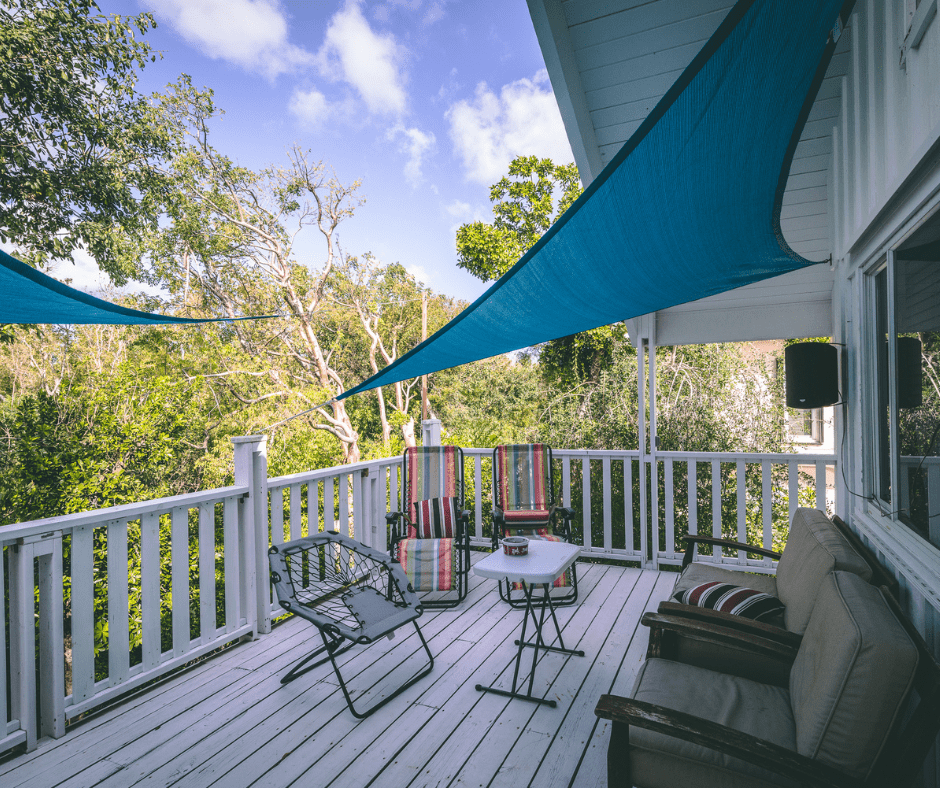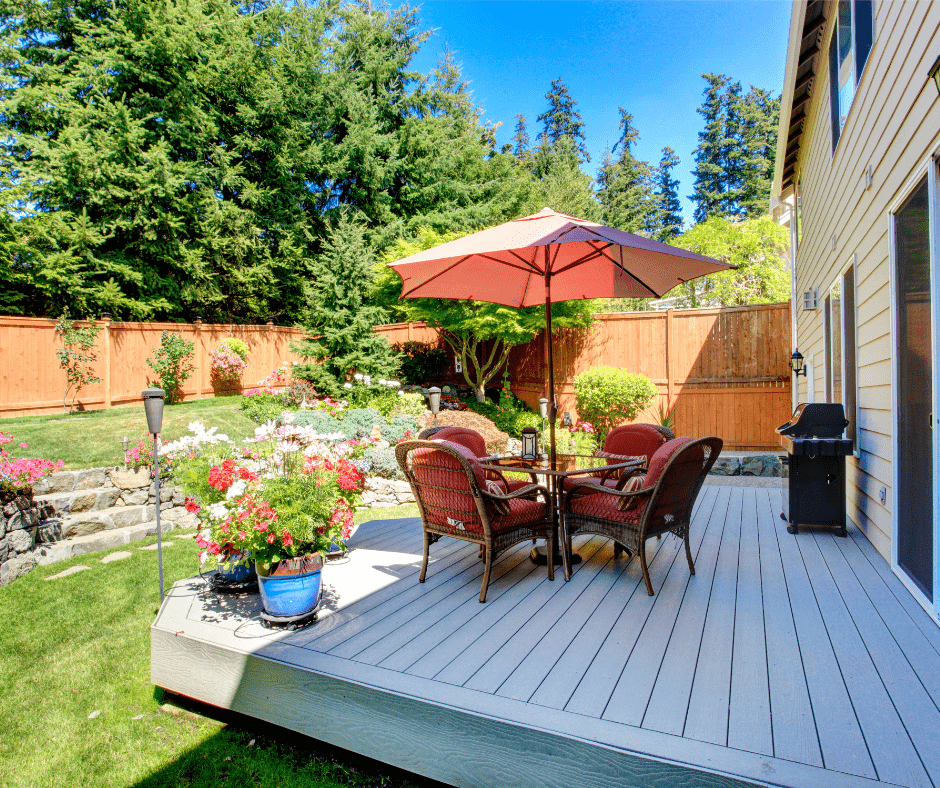Creating Shade in Your Outdoor Areas

You love your outdoor space, but is the afternoon sun stopping you from using it for more than weekend mornings with a cup of coffee? Closing in the space may not be in the budget, but there are many ways you can shade the area without putting a hole in your wallet!
-
Sail Shades For less than $100, purchase a sail shade, a piece of polyethylene fabric, normally cut into rectangles or triangles and grommeted. Most come with a good length of rope to anchor it to your roof or attach it to a pole. It’s practically instant shade, and weather-resistant, so it can be left up all Summer.
-
Cabana A breezy cabana can be made from a simple wooden structure, or even piping! Check out these ideas from Home Decoration Magazine.
-
Vining Shade Build a vertical trellis wall, making sure it’s facing the direction the sun is shining. Plant fast-growing perennial or evergreen vines and train the plants to grow up the trellis. The trellis itself will shield your space from the sun, and the plants will help as they grow.
-
Slatted Shade Pergolas are beautiful open structures on their own or covered with trailing plants. The price tag can be big, depending on how it’s done, but wooden pergola kits are available, as well as metal pergola kits for even less. These instructions from The Created Home show you how to build a simple attached pergola for about $200.
-
Temporary Shade Lifehacker has a tutorial for a simple canopy that’s easy to put up, and easy to take down.
-
Living Screen Visit a reputable nursery where you can get advice from a grower about good shade trees to plant as a screen around the perimeter of your patio. Purchasing 6’-10’ trees may be a bit more expensive, but with the right planting and care, the trees will grow and thrive, providing lush, living shade.
-
Container Shade Bamboo is a hardy plant, and easy to grow in containers. Using several containers together will provide lush greenery for shade or a privacy screen. Find the best bamboo for screening, as well as what containers are best here.
If building or planting your outdoor canopy isn’t your thing, then an extra-large outdoor umbrella will do the trick. Many models are available, and have extending possibilities, and can rotate to follow the sun’s path. No matter what you decide to use, take advantage of your own shady spot to unwind after a busy week, move family meals outside, or just soak in the outdoors.
Courtesy of New Castle County DE Realtor Tucker Robbins.














